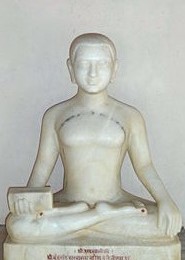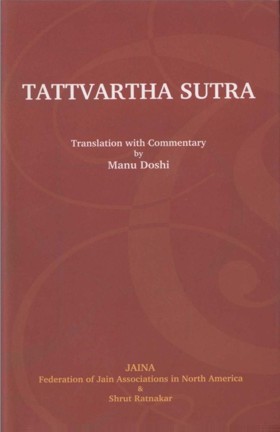09.39 Shukle Chādye Poorvavidah 09.40 Pare Kevalinah
Audio: Sanskrit: शुक्ले चाद्ये पूर्वविदः।
Hindi: उपशांत मोह और क्षीण मोह गुणस्थान में शुक्ल ध्यान के पहले दो भेद पाये जाते है। ये पूर्वधर के होते है।
09.40 Pare Kevalinah
Audio: Sanskrit: परे केवलिनः।
Hindi: शुक्लध्यान के बाद के दो भेद केवलियो में पाए जाते है।
09.41 Prthaktvaikatvavitarkasookshmakriyāpratipātivyuparatkriyanivrttini
Audio: Sanskrit: पृथ्क्त्वैकत्ववितर्कसूक्ष्मक्रियाप्रतिपाति व्यूपरतक्रियानिवृत्तीनि।
Hindi: पृथक्त्व वितर्क, एकत्व वितर्क, सूक्ष्मक्रिया प्रतिपाति और व्यूपरत क्रिया निवृत्ति ये चार शुक्ल ध्यान के भेद है।
09.42 Tattryekakāyyogāyogānām
Audio: Sanskrit: तत्र्येककाययोगायोगानाम्।
Hindi: वह(शुक्लध्यान)अनुक्रम से तीन योग वाले, एक योग वाले, काय योग वाले और योगरहित के होता है।
09.43 Ekāshraye Savitarke Poorve
Audio: Sanskrit: एकश्रेये सवितर्के पूर्वे*।
Hindi: पहले दो शुक्लध्यान एकाश्रित और सवितर्क होते है।
09.44 Avichāram Dwitiyam
Audio: Sanskrit: अविचारम् द्वीतीयम्।
Hindi: पहला ध्यान सविचार और दूसरा ध्यान अविचार होता है।
09.45 Vitarkah Shrutam
Audio: Sanskrit: वितर्क श्रुतम्।
Hindi: वितर्क अर्थात श्रुत।
09.46 Vīchāro'rthavyanjanyogsankrāntih
Audio: Sanskrit: *विचारोऽर्थव्यंजनसङ्क्रांतिः।
Hindi: विचार अर्थात अर्थ,व्यंजन और योग की संक्रांति।
09.39-46
English: There are four categories of Shukladhyān, viz. a) Prthaktvavitarka, b) Ekatvavitarka, c) Sookshmakriyāpratipāti and d) Vyuparatakriyānivrtti. The first two categories can be resorted to by those, whose delusion is calmed down or overcome and who know Poorvas. The latter two categories arise to the omniscient Lords. These four categories arise to those who exercise all the three faculties, or any one of the three faculties, or only the physical faculty or who do not exercise any of them. The first two groups resort to any one aspect; the former resorts to thinking, the latter does not. Vitarka denotes sacred literature; Vichār denotes meaning, connotation and moving from one Yog to another.
These sutras deal with Shukladhyān which denotes pure meditation. It can be resorted to by those, who are at least at the 8lh stage of spiritual elevation and who are well versed in Poorvas. After reaching the 8lh stage it is easy to rise swiftly. But that stage is not considered attainable at present. Moreover Poorvas have been lost since long. As such, Shukladhyān is not now considered feasible. It is of the following four types.
This means contemplating about different aspects and differing states of soul or any other object on the basis of scriptural knowledge. This can be termed as multi-tiered contemplation.
This means contemplating on only one aspect of soul or of any other object on the basis of the knowledge acquired. This can be termed as unitary contemplation.
This relates to the contemplation of an omniscient Lord, when he forsakes all physical, mental and verbal faculties and resorts to the subtle body. This can be termed as subtle contemplation.
This is the contemplation of an omniscient Lord at the time of liberation. That leads to the irreversible stillness of soul.The terms Vitarka and Vichār occurring in the first two categories need explanation. The sutras 45 and 46 state that Vitarka denotes the contemplation based on scriptural knowledge, while Vichār denotes the contemplation, irrespective of the scriptural knowledge, about various terms and their implications and so on, while resorting to physical, verbal or mental faculty. The term Nirvichār therefore denotes the absence of such varying contemplation. In other words, it conveys staying steady on one aspect.
 Acharya Umaswati
Acharya Umaswati
